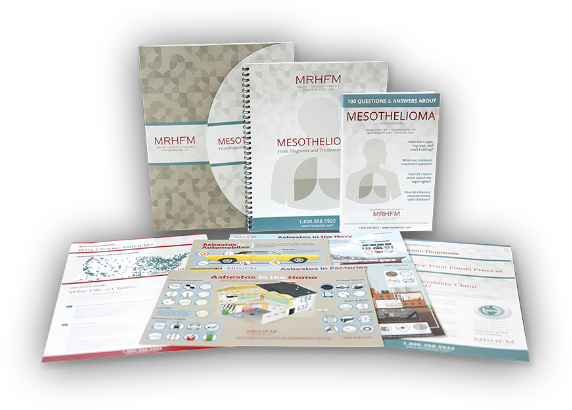Dr. Paul H. Sugarbaker, Chief of the Peritoneal Surface Malignancy Program at Washington Hospital Center in DC, is one of the world’s leading experts in the diagnosis and treatment of peritoneal mesothelioma. In fact, Dr. Sugarbaker’s treatments are so innovative that one bears his name. Called the Sugarbaker Procedure, this life-saving treatment is a combination of Cytoreductive Surgery (CRS) and Heated Intraperitoneal Chemoperfusion (HIPEC). While Sugarbaker performs around 70 such procedures each year, specialists at 100 medical centers across the country perform the procedure around 1,500 times a year. Advocates predict that the number of procedures could grow to 10,000 a year.
Another number that appears to be growing is the number of pioneering inventions Dr. Sugarbaker has under his belt. One invention in particular, the Abdomino-Pelvic Perfusion and Lavage Apparatus, consists of a sizable number of components, including pumps, that address issues ranging from heat control and fluid delivery to surgical team safety during hyperthermic perfusion procedures. Some patent specifications include:
- A fluid supply reservoir, which serves as a source for the perfusion fluid
- A first pump in hydraulic communication with the fluid supply reservoir and at least one fluid port for providing the perfusion fluid from the source to the containment vessel
- A second pump in hydraulic communication with the fluid supply reservoir and at least one fluid port for returning the perfusion fluid from the containment vessel back to the source
- A heater in thermal communication with a fluid containing means to heat the perfusion fluid to a temperature of about 30.degree. C. to about 50.degree. C. during use of the containment vessel in hyperthermic peritoneal perfusion
- At least one inflow tube in hydraulic communication with the fluid port receiving the perfusion fluid from the source for providing the perfusion fluid to the well formed in the patient's abdomino-pelvic cavity
- At least one drain tube in hydraulic communication with the fluid port returning the perfusion fluid to the source and having a distal intake end extended into the well in the patient's abdomino-pelvic cavity for providing the perfusion fluid from the well
- At least one temperature sensor positioned in proximity with the distal intake end of the drain tube, and in communication with a thermostatic control in communication with the heater –U.S. Patent and Trademark Office
Further aspects of Dr. Sugarbaker’s apparatus, claims, and patent history are lengthy, so check with the U.S. Patent and Trademark Office (USPTO) to learn more.
About HIPEC
HIPEC is a type of hyperthermic perfusion procedure used to treat advanced abdominal cancers such as peritoneal mesothelioma. When combined with CRS, HIPEC is considered one of the most effective treatments for this life-threatening disease. CRS reduces the tumor burden within the abdomen, so this part of the procedure is performed first. Explains Dr. Charles Komen Brown, National Director of Hyperthermic Intraperitoneal Chemotherapy and Medical Director of Surgery & Surgical Oncologist at Cancer Treatment Centers of America, “once as many tumors as possible have been removed, a heated, sterilized chemotherapy solution is delivered to the abdomen to penetrate and destroy remaining cancer cells.”
“Unlike systemic chemotherapy delivery, which circulates throughout the body, HIPEC delivers the chemotherapy solution directly to cancer cells in the abdomen,” per Cancer Treatment Centers of America. “This allows for higher doses of chemotherapy treatment. Heating the solution may also improve the absorption of chemotherapy drugs by tumors and destroy microscopic cancer cells that remain in the abdomen after surgery.”
The solution is around 41 to 42 degrees Celsius (107 Fahrenheit), which is about the temperature of a warm bath. It is circulated throughout the abdomen for approximately 90 minutes. Often called “Heated Chemotherapy Bath” or “Chemo Bath,” the process is complete once the solution is drained from the abdomen and the incision is closed. HIPEC destroys any undetected cancer cells after tumors have been removed, thus preventing them from forming into new tumors. Sans the development of new tumors, the expectation is that cancer is less likely to return.
Sources
"Apparatus and Method for Abdomino-pelvic Chemotherapy Perfusion and Lavage." U.S. Patent and Trademark Office (USPTO). Office of the Chief Communications Office, 02 May 2002. Web. 19 Feb. 2017.
Brown, Charles Komen, Dr. "Hyperthermic Intraperitoneal Chemotherapy (HIPEC)." CancerCenter.com. Cancer Treatment Centers of America, n.d. Web. 29 Jan. 2017.
"HIPEC Treatment." UC San Diego Health, Moores Cancer Center. Regents of the University of California, 2017. Web. 19 Feb. 2017.
Hyperthermic Intraperitoneal Chemotherapy (HIPEC). Perf. Dr. Charles Komen Brown. N.d. Cancer Treatment Centers of America, 29 Jan. 2017. Web. 21 Feb. 2017.
Pollack, Andrew. "Hot Chemotherapy Bath: Patients See Hope, Critics Hold Doubts." The New York Times. The New York Times, 11 Aug. 2011. Web. 19 Feb. 2017.
Sugarbaker Oncology Associates. Sugarbaker Oncology Associates, 2017. Web. 19 Feb. 2017.
Washington Post. "Last-Hope Surgery." Health.HeraldTribune.com. Herald-Tribune Media Group, 31 Dec. 2012. Web. 19 Feb. 2017.






